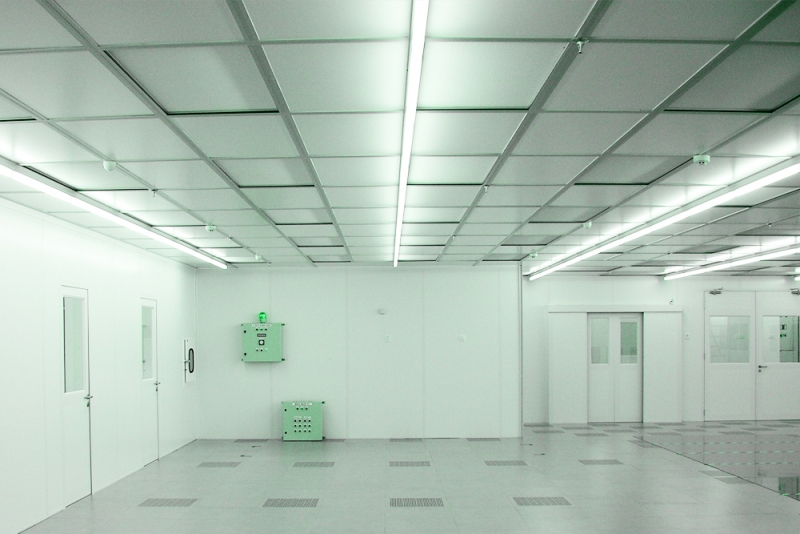The first step to identifying what lighting solution can be utilized in the cleanroom facility is determining the ISO classification. The higher the ISO classification, the greater the number of particles allowed into the controlled environment. This means there will be fewer air filters taking up space in the ceiling. In the most stringent cases, the entire ceiling must be covered with filters to allow the absolute minimum amount of particles into the environment.
Airflow systems create lighting challenges
Everything in the cleanroom, including the lighting fixtures, is designed to ensure successful air filtration and maintain the laminar airflow in a contamination-free environment. Depending on the function of the controlled environment, a cleanroom will use either HEPA or ULPA filtration.
Common fixture styles
The need for multiple air filters in cleanroom facilities leaves minimal space for light fixtures. There are three common fixture styles for cleanrooms that maximize the use of the space: recessed troffers, surface-mount fixtures, and surface-mount teardrop fixtures. These are best-suited for use in cleanroom facilities, depending on ISO classification.
Achieving effective light quality
In addition to becoming familiar with the fixture styles for each ISO classification, it is important to know what to consider when selecting the exact fixture. Understanding what lighting features are most important for cleanroom environments will help determine the most efficient solution that requires the least amount of maintenance possible.
Light levels
In most cases, cleanroom facilities produce and/or test small objects. Pharmaceutical and semiconductor industries, for example, typically use cleanrooms to manufacture small pills and computer chips, respectively.
Housings
Fixture housings must be constructed of materials such as aluminum, carbon steel, or stainless steel. These help eliminate the chance of contamination and stand up to rigorous cleaning procedures. The fixture should be welded or sealed shut to prevent the passage of particles into or out of the housing. This minimizes the chance for dust or particle collection on the fixture.
Lenses
Lenses should have a smooth outer surface, meaning those with prisms should be inverted so the prisms are on the inside of the fixture. This makes the fixture easy to clean and creates less opportunity for contaminants or dirt to collect. Many lenses and diffusers are available for each ISO classification. Acrylic lenses currently are the most common type because they are the most durable.
Advancements in cleanroom lighting
Continuous technological innovations have made the cleanroom industry dynamic and ever-changing. Manufacturing has become more demanding and regulations are becoming more stringent. Given those factors, plus the current focus on energy savings and the environment, a growing number of cleanroom lighting projects today are retrofits or renovations.
Resources & Articles
CLIN® "Resources" page is for individuals/companies seeking information on cleanrooms and controlled environments. Find Cleanroom News, Discussion Forums, Cleanroom Cleaning Recommendations, Cleanroom Terminology, Cleanroom Directory, and more.
Content Disclaimer











